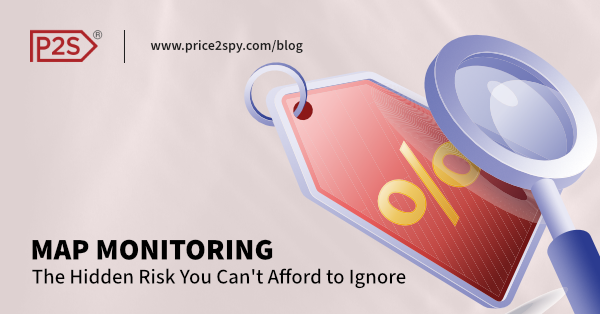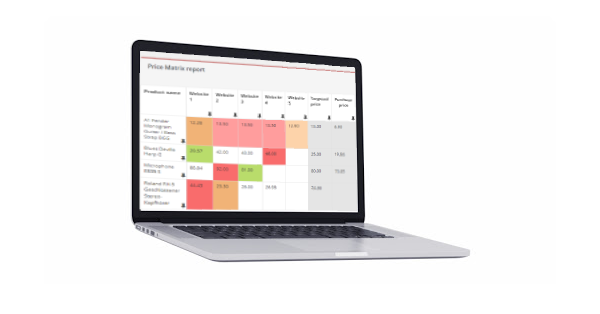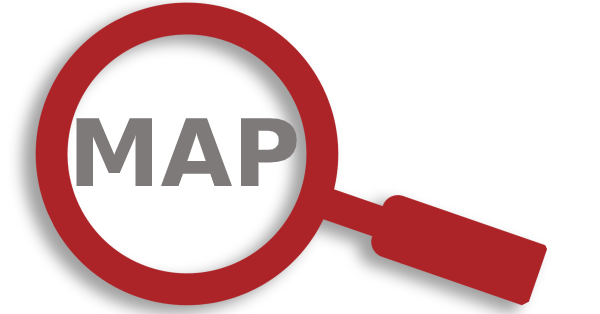
What Makes MAP Monitoring a Hidden Risk You Can’t Afford to Ignore?
Your brand’s reputation may be collapsing without you even knowing. Without a proper MAP (Minimum Advertised Price) monitoring system, pricing policy violations can remain invisible until it’s too late.

This leads to top management head scratches without knowing what hit them. The answer lies in monitoring and controlling where and how your products are being sold. Let’s take a more detailed look.
What is MAP monitoring?
MAP monitoring means keeping track of how third-party sellers advertise your products and whether they adhere to your MAP policy.
In an ideal world, all the resellers would respect your MAP policy. Reality can be different, however.
A reseller may violate your MAP policy due to various reasons, including:
- Price competition and undercutting;
- Lack of awareness and/or understanding;
- They are unauthorized sellers;
- They don’t think enforcement is coming;
- Confusion caused by promotional periods and bundled offers.
The bottom line is resellers violate MAP primarily because it gives them a short-term edge, or because they don’t believe there will be consequences. In rare cases it can happen due to low caution and confusion. That’s why consistent communication, strong enforcement, and automated MAP monitoring are critical to stopping violations before they damage your brand and your bottom line.
Why is MAP monitoring important?
Skipping or doing a poor job of MAP monitoring may seem harmless at first. But here’s what’s really at stake:
- Your brand image is on the line
Product prices signal value and quality to customers. This is what makes prices so important. Lower prices can often signal lower value. Unless you are targeting a very price sensitive customer segment, this is something you want to avoid.
If your products are frequently sold at deep discounts your brand perception will erode. This is especially true if done by unauthorized sellers. Also, any inconsistencies in pricing can cause distrust and confusion with your customers. Your positioning will be compromised and customer loyalty will decrease.
- Your margins will erode quickly
Usually what happens when one seller breaks your MAP policy is that others follow in their steps. Since everyone wants to stay competitive, a “race to the bottom” starts. This decimates profit margins for both you and partner retailers.
- Other retailers’ trust will break down
Retailers who honor your MAP policy expect a level playing field. When their competitors undercut them without consequences, their trust in your brand drops. If this goes on long enough these same retailers may stop selling your products altogether.
Consistent MAP monitoring and enforcement nurtures these relationships and ensures retailer loyalty.
Manual vs. Automated MAP Monitoring
Now, let’s talk about how you actually monitor MAP. There are two main ways: manual or automated.
Manual MAP monitoring
Manual MAP monitoring consists of you searching for your products across retailers, checking prices, taking screenshots, and following up.
Basically, it means doing everything by hand.
This is suitable for brands and manufacturers who:
- Have tiny catalogs;
- Sell only through a few sellers;
- Have hours of free time every day.
In other cases, manual approach is an uphill and a losing battle. It consumes time, it’s easy to miss things, and impossible to scale. Violations happen around the clock and they are easy to miss.
Automated MAP monitoring
Automated MAP monitoring means finding a smarter way of doing the things listed above. It usually means creating your own solution or opting for an off-the-shelf MAP monitoring tool.

The obvious advantage of automatic monitoring is that it’s significantly quicker. Besides that some other advantages are:
- Real-time alerts,
- Easy-to-understand reports,
- Proof of violations,
- Multi-channel coverage.
When you do this manually, you are doing something you didn’t sign up for. With automated tools, you free up a significant amount of your schedule and gain peace of mind. This enables you to focus on more important operational and strategic aspects of your business.
Frequently asked questions (FAQ)

What is the difference between terms such as MAP, MSRP, and SRP?
These terms are often confused, but they mean different things:
- MAP (Minimum Advertised Price): The lowest price a reseller is allowed to advertise your product for (publicly). It doesn’t control the final sale price.
- MSRP (Manufacturer’s Suggested Retail Price): The price you recommend resellers sell your product for. It’s just a suggestion and isn’t enforced.
- SRP (Suggested Retail Price): This is basically another name for MSRP. Some brands use SRP instead, but it means the same thing.
Is MAP policy enforcement legal?
Yes, MAP policies are legal in the U.S. when implemented correctly. You’re allowed to set advertising guidelines and choose who you do business with based on who follows them.
However, you can’t dictate the actual sale price. That could cross into illegal price-fixing territory. To stay compliant, make sure your MAP policy is:
- Unilateral (you set the policy without asking retailers to agree)
- Clearly documented
- Enforced consistently
When in doubt, it’s a good idea to consult legal counsel.
How frequently should brands monitor for MAP policy violations?
Daily or near real-time monitoring is ideal, especially if your products are sold across multiple online platforms.
Violations can happen quickly. One seller dropping below MAP can trigger a domino effect. If you’re relying on weekly or monthly checks, you’re probably catching violations too late. That’s why many brands use automated MAP monitoring tools for ongoing, around-the-clock coverage.
Conclusions
To some brands, MAP monitoring doesn’t seem worth investing into. Others understand the value it brings: not letting violations quietly undermine their margins, retailers’ trust, and brand value.
Smaller brands are capable of doing it manually. Larger ones require specialized tools (such as Price2Spy) to help them with this.
Regardless of what type of brand you are, ignoring monitoring for MAP policy violations is a risk you can’t afford to take.



